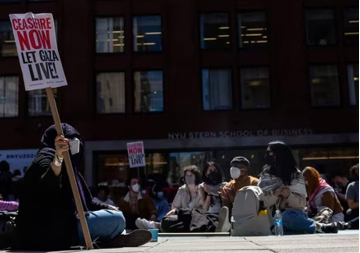
In October 2023, the Janaagaraha Centre for Citizenship and Democracy, a Bengaluru-based not-for-profit institution working on urban transformation, released a report titled ‘Annual Survey of India’s City-Systems: Shaping India’s Urban Agenda’ (ASICS). The survey was conducted between December 2021 and December 2022. It aimed at a comprehensive appraisal of city governance and its quality in the country. Among its outputs, it also took stock of the state of urban planning in Indian cities. This study came out after a gap of five years with an altered emphasis. This time around, it stressed on the state as a unit instead of the past practice of ranking cities based on governance indices. The report covered 4,800 cities in 35 states/UTs in India. It evaluated 82 municipal legislations in the country, 44 town and country planning statutes, 176 allied legislation and rules and 32 policies and related documents.
The key findings of the report were that outlays of the Ministry of Housing and Urban Affairs (MHUA) have been mounting. They grew 488 per cent–from about INR 80 billion in 2009-10 to INR 470 billion in 2021-22. The MHUA has pumped in money through several urban missions and schemes, such as the Atal Mission for Rejuvenation and Urban Transformation (AMRUT), Swachh Bharat Mission Urban (SBM-U), Smart Cities Mission (SCM), transportation projects such as metro rail and other infrastructure projects. However, these were insufficient as urbanisation appeared to outpace the efforts. Consequently, the challenges of quality of life were rising.
The key findings of the report were that outlays of the Ministry of Housing and Urban Affairs (MHUA) have been mounting.
Some other significant findings were that the states had implemented a mere 42 percent of the provisions of the 74th Constitution Amendment Act of 1992. On average, only 20 percent of municipal expenditure could be covered by property tax. While 90 percent of the cities and towns did not have a digital public finance management system, 36 percent of the sanctioned positions in Urban Local Bodies (ULBs) lay vacant.
The report also delved into the definitional aspects of ‘urban’ and raised questions about the quantum of actual urbanisation in India. In effect, the census calculations and premises on what constitutes urban were challenged by the World Bank report and the satellite data of the Global Human Settlements Layer of the Group on Earth Observations at the European Commission. The World Bank held that India’s urban population was over 50 percent whereas the European Commission estimated it to be around 63 percent in 2015.
In regard to urban planning, the report found that 39 percent of cities that were state capitals, did not possess active spatial plans. Furthermore, there was little devolution of the planning function to the level of cities as it was the development authorities that were leading the planning process, except Mumbai. The report recognised the problem in city-level planning devolution as most cities lacked qualified urban planning professionals who could put together a plan. The other major observations in the report were about the existence of multiple municipal statutes in the same state, the general non-empowerment of the mayor and the lack of space for citizens in the city’s decision-making process.
There was little devolution of the planning function to the level of cities as it was the development authorities that were leading the planning process, except Mumbai.
The report was released by the Union Minister of Urban Development and Housing in Bengaluru. In his inaugural remarks, he mentioned that there had been a six-fold increase in financial resource allocations to ULBs between the 13th and 15th Finance Commissions and that for the first time the 15th Finance Commission distinguished between million plus cities and other ULBs and provided 100 percent outcome-based funding to the tune of INR 38,196 crores to 50 ULBs.
Based on the findings of the survey, it concluded that India’s urban challenges were too deep and systemic to be fixed through a “few tactical stabs”. A long-term strategic view of urban transformation was needed. The report recommended 10 ‘instruments of change’. These were the following:
- The preparation and implementation of spatial development plans that integrate economy, equity, environment and engagement
- The formulation and operationalisation of street and public space design standards along with standardised contracts
- Constitutional amendment empowering cities and recognising them as distinct units of governance
- The introduction of metropolitan authorities for the governance of cities with a population of over four million
- The empowering of mayors and councils to unleash the potential of Indian cities
- The creation of city frameworks that are driven by technology and transparency and possess a data and metrics-oriented interface that connects citizens and governments in real-time
- Rendering the city governments financially sound through predictable transfers and own revenue enhancement
- Catalyse large-scale financing for urban infrastructure through municipal borrowings
- Digital grant management tools for the timely transfer of grants to city governments, tracking of the physical and financial progress of infrastructure projects and reporting and monitoring based on a single source of trusted data
- Shared services and cadre and recruitment rules.
This article attempts a critical analysis of the recommended instruments of change. These instruments could be subdivided into four categories. Two of them deal with urban spatial planning and urban design. Two others are focussed on digitisation. Two recommendations are in regard to municipal finance and four are about urban governance. Let us first take up the two recommendations on land use planning and urban design. The preparation of spatial plans every 20 years is a mandatory activity that all cities must do. Cities are planned entities and cannot be done without a spatial plan. The other recommendation about standards of street and public space design is important from the point of view of city aesthetics and operability. It is a laudable commendation and ought to be built into city work. It would have been useful to have data on the level of implementation of spatial plans in cities where they exist. It would have brought out the utter inability of cities to implement spatial plans since many of the planned amenities involve the acquisition of land. This is beyond the means of cities, given their financial fragility.
Many organisations and urban academicians have been favouring the empowerment of urban local bodies (ULBs) and their mayors.
The recommendations in regard to a generous injection of digitisation in municipal functioning have been talked of for quite some time and governments have been in favour of it. But individual cities have taken this up in different ways and different degrees. As a consequence, most cities in effect are not currently in a position to call themselves thoroughly digitised. There is, per se, no political opposition to them, but the implementational aspect leaves a lot to be desired. Neither should there be any major issue with shared services and cadre and recruitment rules.
However, the suggestions in regard to city and metropolitan governance and the financing of ULBs are mostly not new. Many organisations and urban academicians have been favouring the empowerment of urban local bodies (ULBs) and their mayors. Many others have also favoured active citizen participation in municipal affairs. Also, the financing of ULBs has been a common refrain of most people working on municipal finance, including the idea of municipal bonds and their tax-free status. These matters were also imbued in the spirit of the 74th Constitutional Amendment Act. Unfortunately, all states have dragged their feet on these reforms for the last thirty years and no progress has been made. The Jawaharlal Nehru National Urban Renewal Mission (JNNURM) and subsequent central schemes sought to incentivise some of these reforms by linking them to central allocations. While some cities took some initial steps, they did not follow through and were able to access central funds without walking the full distance on reforms. The Government of India was loath to punish states for their misdemeanours.
In the cited context, these suggestions seem to be falling on deaf ears. The central government has not shown an appetite to force the issue and the state governments have made it known that city empowerment, either in the area of governance or in finance is not their cup of tea.
Ramanath Jha is Distinguished Fellow at the Observer Research Foundation
The views expressed above belong to the author(s). ORF research and analyses now available on Telegram! Click here to access our curated content — blogs, longforms and interviews.




 PREV
PREV


